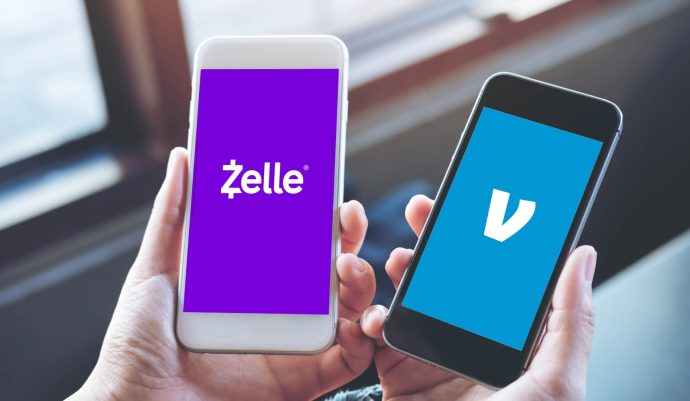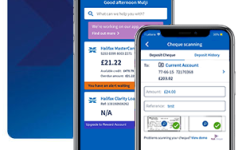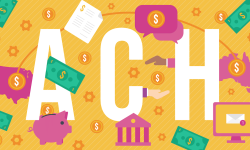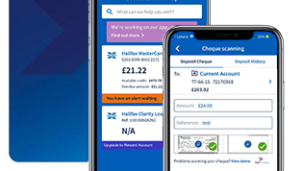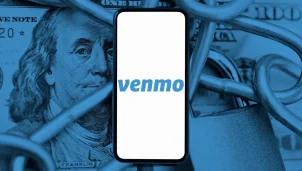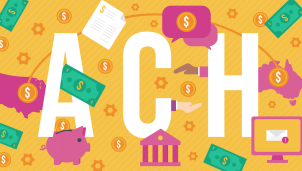Are you tired of constantly shuffling between different payment apps to split bills or send money to friends and family? Well, Zelle and Venmo are here to make your life easier, but which one should you choose: Venmo or Zelle? Let’s dive into the battle and find out which app reigns supreme. Let’s find out each and every difference between Venmo and Zelle!
Zelle vs Venmo: Who’s Better?
Zelle is your go-to electronic money transfer service that plays nice with many big-shot US banks, allowing you to shoot payments to pals and kinfolk with the flick of a finger. Forget about those archaic account and routing numbers; you only need your buddy’s phone number or email to settle that dinner tab or divide grocery expenses hassle-free.
Signing up for Zelle is smoother than butter on a hot skillet. If your bank already rolls with Zelle, just log into your online banking hub and get the party started. Not onboard yet? No worries! Just snag the Zelle app, sign up, and you’re good to go. If someone sends you cash through Zelle and you’re not in the loop yet, no sweat – you’ll be gently nudged to join the club to claim your moolah.
What about the Venmo registration process?
- Download the Venmo App.
- Create an account and verify your phone number/email.
- Link a payment method.
- Add friends/contacts.
- Start using Venmo for payments and splitting bills.
Lightning Speed: Transfers
Are Zelle transfers instant? When it comes to speed, Zelle takes the crown. Payments to registered Zelle users zoom through the digital highway and land in their accounts quicker than you can say “instant noodles.”
The speed is actually the main difference between Venmo and Zelle. Meanwhile, poor Venmo chugs along at a leisurely pace, taking a snooze for 1-3 business days before completing a standard transfer. Want to turbocharge your Venmo transfer? Prepare to shell out a 1.5% fee for a Venmo instant transfer.
Can You Undo It? Reversal Policy
In the land of Zelle, what’s done is done. Once that payment hits the airwaves and both sender and receiver are Zelle pros, there’s no turning back. However, if your buddy hasn’t hopped on the Zelle bandwagon yet, you might still have a chance to pull the plug on the payment.
On the other hand, with Venmo, there’s no turning back once the payment is sent. However, reaching out to Venmo’s customer support might offer a glimmer of hope in rectifying a transaction gone awry.
Compatibility Check
Can Zelle and Venmo play nice together? Not quite. Zelle doesn’t speak Venmo’s language, so you can’t sling cash directly from Zelle to a Venmo account. However, you can take the scenic route by sending funds from Zelle to your buddy’s bank account (if it’s linked to Venmo) and then watch them do the final lap to their Venmo balance.
Safety Dance: Which is Safer, Zelle or Venmo?
So, which is safer, Zelle or Venmo? Is Zelle safer than Venmo? Rest assured, both Zelle and Venmo have their guard up to keep your dough safe and sound. Zelle throws up authorization checkpoints and keeps an eagle eye out for fraudsters.
Venmo, on the other hand, boasts about its digital wallet and layers of security to shield your cash from prying eyes. So, there is no definite answer for the “is Zelle safer than Venmo?” question. Each is pretty reliable.
Zelle and Venmo both prioritize safeguarding your funds, employing encryption and transaction monitoring to fend off cyber threats. And if you misplace your phone? No sweat – both platforms allow you to disconnect it from your account to keep your funds out of harm’s way.
Crossing Borders: Zelle’s Achilles’ Heel
Zelle might be the hometown hero, but it stumbles when it comes to crossing international borders. Say goodbye to sending cash to Auntie Mabel in Timbuktu or splitting vacation expenses with your buddy Down Under. If you’re jet-setting or have family abroad, Zelle’s hands are tied, leaving you high and dry.
Streamlined Transfers for the Banking World
Zelle caters to those seeking streamlined money transfers directly from their bank accounts. It operates within the infrastructure of major US banks, enabling users to send money quickly and securely using just an email address or phone number. Zelle eliminates the need for third-party apps and intermediaries, making it a seamless experience for those already entrenched in online banking.
Pros and Cons of Zelle vs Venmo: Navigating the Digital Money Maze
Both Zelle and Venmo offer unique advantages, each catering to different needs and preferences. However, along with their perks come a few drawbacks. Let’s delve into pros and cons of Zelle first to help you make an informed decision.
Pros of Zelle: The Wallet Warrior
Zelle strides confidently onto the digital payments battlefield, armed with a host of advantages that make it a formidable contender. Here are the pros and cons of Zelle.
- Fee-free transactions: Does Zelle have fees? Say goodbye to pesky fees eating away at your hard-earned cash. Zelle prides itself on offering fee-free transactions, ensuring that what you send is what your recipient receives, with no deductions along the way.
- Extensive bank coverage: With Zelle, you’re not confined by banking affiliations. Boasting access to nearly 10,000 banks and credit unions across the U.S., Zelle ensures that almost everyone can join the digital money party, regardless of their financial institution.
- Lightning-fast transfers: Need to send money in a hurry? Are Zelle transfers instant? Zelle’s got your back. With transfers typically landing in the recipient’s account within minutes, you can bid farewell to the days of waiting for funds to clear.
- Interest-earning potential: Here’s the cherry on top – with Zelle, your money doesn’t just sit idly by; it has the potential to earn interest when held in checking or savings accounts linked to the platform. Making your money work for you? That’s the Zelle way.
Cons of Zelle: Navigating the Pitfalls
- Inability to cancel payments: Once the send button is pressed, there’s no turning back with Zelle. If the recipient is enrolled in Zelle, canceling a payment becomes next to impossible, leaving little room for error.
- Absence of branded cards: Unlike some competitors, Zelle doesn’t offer its own branded debit or credit cards. While this may not be a deal-breaker for everyone, those seeking a one-stop shop for their financial needs might find this aspect lacking.
- No linking to credit cards: If you prefer to pay with plastic, Zelle might not be your cup of tea. The platform doesn’t allow users to link their accounts to credit cards, limiting payment options for some individuals.
- Lack of cash balance feature: Need a digital piggy bank? You won’t find it here. Zelle doesn’t offer the ability to maintain a cash balance within the app, which might be a downside for those looking to stash some spare change for a rainy day.
Venmo Pros and Cons
Let’s now briefly summarize all the Venmo pros and cons.
Pros of Venmo: The Social Speedmaster
On the other side of the ring, Venmo steps up to the plate with its own set of enticing perks and features. Here’s why Venmo might be your go-to choice for digital transactions:
- No monthly or annual fees: Venmo prides itself on transparency, offering fee-free transactions without any hidden costs. Whether you’re sending money to a friend or making a purchase online, you can rest assured that your wallet won’t take a hit from additional fees.
- Versatile payment options: Venmo isn’t just for sending money to friends – it’s a versatile tool that can be used for online or in-store purchases. Whether you’re splitting a bill at dinner or shopping online, Venmo offers convenience and flexibility.
- Branded debit and credit cards: With Venmo, you can take your digital wallet to the next level with branded debit and credit cards. These cards offer additional perks and benefits, including cashback rewards and enhanced security features.
- Cash balance feature: Need to keep track of your spending? Venmo offers a cash balance feature that allows you to maintain funds in your account for future use. Whether you’re saving up for a rainy day or budgeting for a big purchase, Venmo makes it easy to manage your money.
Cons of Venmo: Navigating the Pitfalls
- Fees for some services: While Venmo prides itself on fee-free transactions, certain services may come with additional charges. For example, Venmo instant transfer and certain payment methods may incur fees, so it’s essential to read the fine print.
- Privacy concerns: Venmo’s social media-style features may appeal to some users, but they also come with privacy implications. Unless you adjust your privacy settings, your transactions and spending habits may be visible to others on the platform.
- Delayed availability of funds: Unlike Zelle’s lightning-fast transfers, funds sent through Venmo may not be available instantly unless you’re willing to pay a fee for instant transfers. If you’re in a hurry, this delay could be a significant drawback.
- No interest earning: While Venmo offers a cash balance feature, funds held in your Venmo account do not earn interest. If you’re looking to make your money work for you, this lack of interest-earning potential may be a downside.
- Transaction limits: Venmo imposes transaction limits, such as a weekly maximum for person-to-person payments. While these limits are designed to prevent fraud and protect users, they may be restrictive for some.
So, now all the Venmo pros and cons are crystal-clear.
Final Thoughts
As we wrap up our comparison, the “Venmo or Zelle” choice ultimately boils down to your individual needs and preferences. Venmo might be your go-to digital wallet if you value speed, social interaction, and a touch of security. However, if you prioritize seamless bank integration and reliability, Zelle could offer a better fit.
Ultimately, whether you’re on Team Zelle or Team Venmo, the goal remains the same: to streamline your financial transactions and simplify your life. So, weigh your options, consider your priorities, and choose the digital wallet (be it Venmo or Zelle) that aligns with your lifestyle. After all, the power is in your hands in the world of digital money.

